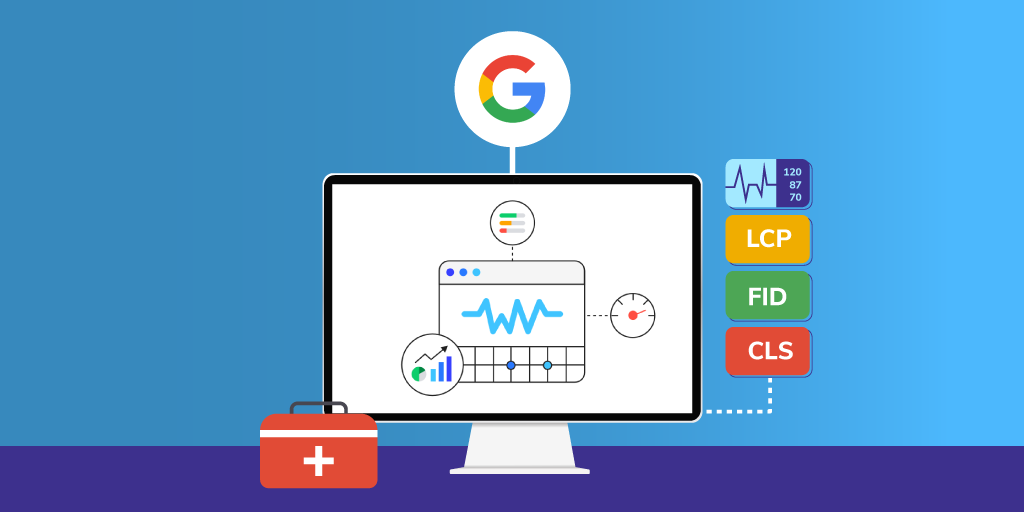In this fast-moving world of digital marketing, you need to keep yourself updated with the algorithmic changes introduced by Google if you want to get the top ranking in SEO. Amongst all back-to-back updates, the most highlighted one was about the introduction of Core Web Vitals by Google.
These are important metrics that will determine the success of your website in terms of search results. But what does this term mean, and how does it influence your SEO ranking? But more importantly, how would one optimize his website performance to meet the standards set by these metrics? This blog post by FOR® answers that and much more.
What are Core Web Vitals?
Core Web Vitals represents a subset of factors relating to the overall user experience of a webpage that Google believes is particularly important. These metrics focus on three main aspects: loading performance, interactivity, and visual stability. Let’s categorize them.
Largest Contentful Paint (LCP)
It is responsible for defining your website’s loading performance. It particularly lets you see how long it takes the largest content element, such as an image or a block of text, to come into view within the viewport. The ideal LCP should happen within 2.5 seconds of the page starting to load.
First Input Delay-FID
FID is a metric related to the interactivity of a website. In other words, it merely records the time difference between when a user first interacts with your website, like clicking a link or button, and when the browser responds to that interaction. Anything less than 100 milliseconds is considered a good score regarding FID.
Cumulative Layout Shift (CLS)
It measures visual stability. CLS provides the total of all unexpected layout shifts in a web page’s lifetime. If the CLS score is less than 0.1, then it’s considered good. Google prioritizes the Core Web Vitals because they reflect users’ real-world experience.
Pages that achieve these thresholds are likely to provide a smoother and more enjoyable experience, thus keeping users engaged and pleased.
How Core Web Vitals Affect SEO Rankings
Core Web Vitals are not just another set of metrics but they are a critical component of Google’s page experience signals and have a direct bearing on your SEO rankings.
Direct Impact on SEO Rankings
Google has made this very clear that Core Web Vitals are part of their ranking algorithm. This means if your website is not well-performing on those metrics, the SEO rankings can suffer no matter how brilliant your content is. Website performance has become a key determinant of the position of your website on SERPs.
Indirect Effect on User Experience
Beyond the direct ranking factors, you must also consider the user experience. Pages that load fast respond quickly when users input something, and stable layouts will likely retain users for longer periods. Improved Core Web Vitals equate directly to longer session times and lower bounce rates, which in turn ultimately enhance your SEO rankings.
How to Optimize Your Website for Core Web Vitals
Improving your Core Web Vitals has nothing to do with simply passing some tests; it’s actually about enhancing your website performance to improve the user’s experience. Here are some strategies to optimize each metric.
Improve LCP
Optimize your image loading first. Compress and properly size images to reduce loading times. Consider next-generation formats like WebP. Then, optimize for server-side rendering. Use SSR to allow for fast delivery of static content using CDNs.
Lastly, reduce the render-blocking resources. Defer non-critical CSS and JavaScript and allow the content to render as quickly as possible.
Enhance FID
Improve FID by reducing the time it takes to execute JavaScript, which can be done by splitting large JS files into smaller ones or by removing the code that isn’t useful. It reduces your browser’s script execution time, and thus interactions start quicker.
Lazy loading also triggers the loading of images and media only when needed, further reducing initial load time. Finally, optimize or remove superfluous third-party scripts, as many seem to greatly delay interactivity. Addressing these factors will greatly enhance your website’s performance and experience.
Minimize CLS
To reduce CLS, make sure images and videos have defined width and height attributes. This prevents browsers from shifting content down while loading. Preload your most important fonts to avoid layout shifts caused by late-loading fonts.
In addition, avoid inserting new content above existing content. By addressing these factors, you can essentially enhance visual stability on your website for a better user experience.
Tools and Resources to Measure Core Web Vitals
If you want to optimize your Core Web Vitals, it would be more efficient if these metrics are frequently measured and monitored. The good thing is that there are tools already available to assist you in measuring the performance of your website and tracking improvements in real-time.
Googles PageSpeed Insights
It provides a full report with every tiny detail about your website’s performance, including Core Web Vitals. This tool breaks down which areas need improvement on each metric, making it helpful for web developers and SEOs alike.
Google Search Console
In the Search Console, a “Core Web Vitals” report shows how your pages are performing with real user data. That report categorizes your pages into sections like “Good,” “Needs Improvement,” and “Poor,” giving you better insight to determine which pages to optimize first.
Lighthouse
This open-source tool comes with Chrome DevTools and allows you to audit the performance of your website, including Core Web Vitals. You’ll receive detailed breakdowns of each metric as actionable insights that help you enhance their values.
Web Vitals Chrome Extension
This browser extension provides instant feedback around Core Web Vitals while browsing your site. It is an easy and fast way to spot problems and see how changes affect your website’s performance.
Frequent practice with these tools will help you maintain good Core Web Vitals and ensure the best possible SEO optimization on your website.
Conclusion
Core Web Vitals are more than just technical metrics. They are perhaps one of the most significant parts of your overall SEO strategy. Maintaining these website performance standards raises the chances of your site’s potential to rank higher in search results and boosts user experience, guaranteeing higher engagement and conversions.
As Google further works on improving its algorithms, staying updated on the updates and implementing the Core Web Vitals is important. Utilize the tools and techniques mentioned in this blog to ensure your website meets and beats the milestones Google has set.
If you want to enhance your SEO rankings, you can contact Toni Hukkanen, the head of FOR® Branding and Marketing Agency, and get a website that is completely optimized for Google engine.




